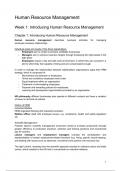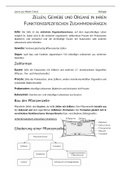Summary
Samenvatting Human Resource Management
- Course
- Institution
Summary for Human Resource Management, Erasmus University, Rotterdam School of Management. Summarize both the book (Carbery, R., & Cross, C. (Eds.). (2018). Human Resource Management (2nd edition). London: Red Globe Press. ISBN: 9781352004021) as the lectures together.
[Show more]












